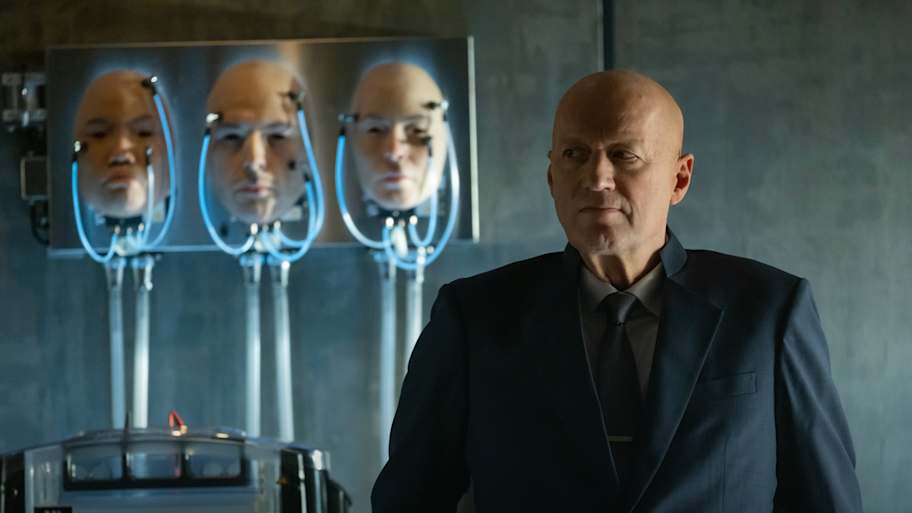
The Journey of a Legend in the 'Alien' Universe
Noah Hawley's science-fiction horror series, Alien: Earth, has come to an end after eight episodes, offering viewers a bold and original story within the larger Alien universe. The show delivered intense extraterrestrial carnage and left a lasting impression on fans. Before the finale, "The Real Monsters," I had the opportunity to speak with Steve Painter, the Lead Prosthetics Supervisor and Designer for the series.
Steve Painter is a legendary figure in the industry, known for his work on projects such as Hellbound: Hellraiser II and Game of Thrones. His contributions to Alien: Earth were nothing short of remarkable, and I was eager to learn more about his experiences and challenges on the show.
A Dream Come True
When asked about stepping into the Alien franchise, Painter admitted that there was both trepidation and excitement. "It’s an iconic franchise, but to be a part of it was just an honor," he said. He also shared how the first Alien movie, which he saw when he was 13, inspired him to pursue a career in special effects. "Forty years later, here I am, working on an Alien project. I sometimes have to pinch myself."
Returning to Horror Roots
Painter expressed that returning to the horror genre was a joy, especially given his long history in the field. He noted that his work on Alien: Earth allowed him to revisit some of his roots while also working on larger-scale projects like Game of Thrones.
Pushing the Boundaries of Gore
One of the standout elements of Alien: Earth was its graphic content, including the evisceration of Tootles’ face in Episode 6. Painter described his approach to these sequences as pushing the boundaries of what is acceptable on television. "I try and push the boundaries anyway, even if it gets curtailed," he explained. He credited Kit Young’s acting for making the scene particularly impactful.
Balancing Practical and Digital Effects
With the advancements in digital technology, Alien: Earth successfully balanced practical and digital effects. Painter highlighted the collaboration between the prosthetics team and the visual effects department. "We were in constant discussions, helping each other to achieve the maximum visual payoff," he said.
The Xenomorph and Its Legacy
The Xenomorph, an iconic design from the original Alien films, was a central focus of the series. Painter gave credit to Weta Workshop for their work on the creature, noting that they were responsible for its creation. He also praised the stunt team for their efforts in bringing the Xenomorph to life on set.
Future Possibilities
While there is no official announcement about a second season, Painter expressed hope that the franchise could explore new directions. "There are backstories to these aliens, not just the Xeno but the others as well," he said. He believed that the world of Alien could continue to expand in exciting ways.
Creating New Creatures
Creating new creatures that could stand alongside the Xenomorph was a daunting task, but Painter found it to be a challenge he welcomed. He emphasized the collaborative nature of the production, where different departments worked together to bring the vision to life.
Influences and Inspirations
Painter drew inspiration from various sources, including the sci-fi elements of the show and the unique environments where the creatures thrived. He noted that the show's cinematography was cinematic, with every aspect contributing to the overall visual experience.
A Cinematic Experience
The structure of Alien: Earth felt like an eight-hour movie, with high-quality storytelling and visuals. Painter compared the production to making a film, noting that the editing process would feel like watching a feature-length movie.
A Cyclical Experience
The show's narrative was designed to be rewatched, with details that become more apparent upon subsequent viewings. Painter agreed that the cyclical nature of the series added depth and richness to the viewing experience.
Lessons from Previous Projects
Painter reflected on his experience with Hellboy II: The Golden Army, noting that the problem-solving skills he developed on that project influenced his work on Alien: Earth. He also mentioned that all his previous projects contributed to his approach to new challenges.
Budget Differences
Despite the differences in budget, Painter found that the core of his work remained the same—problem-solving. He noted that smaller-budget projects could sometimes be more straightforward, while larger ones required more time and resources.
Final Thoughts
As the series comes to a close, Alien: Earth has left a lasting impact on fans and creators alike. Steve Painter's contributions to the show have been instrumental in bringing the terrifying world of Alien to life.

Post a Comment